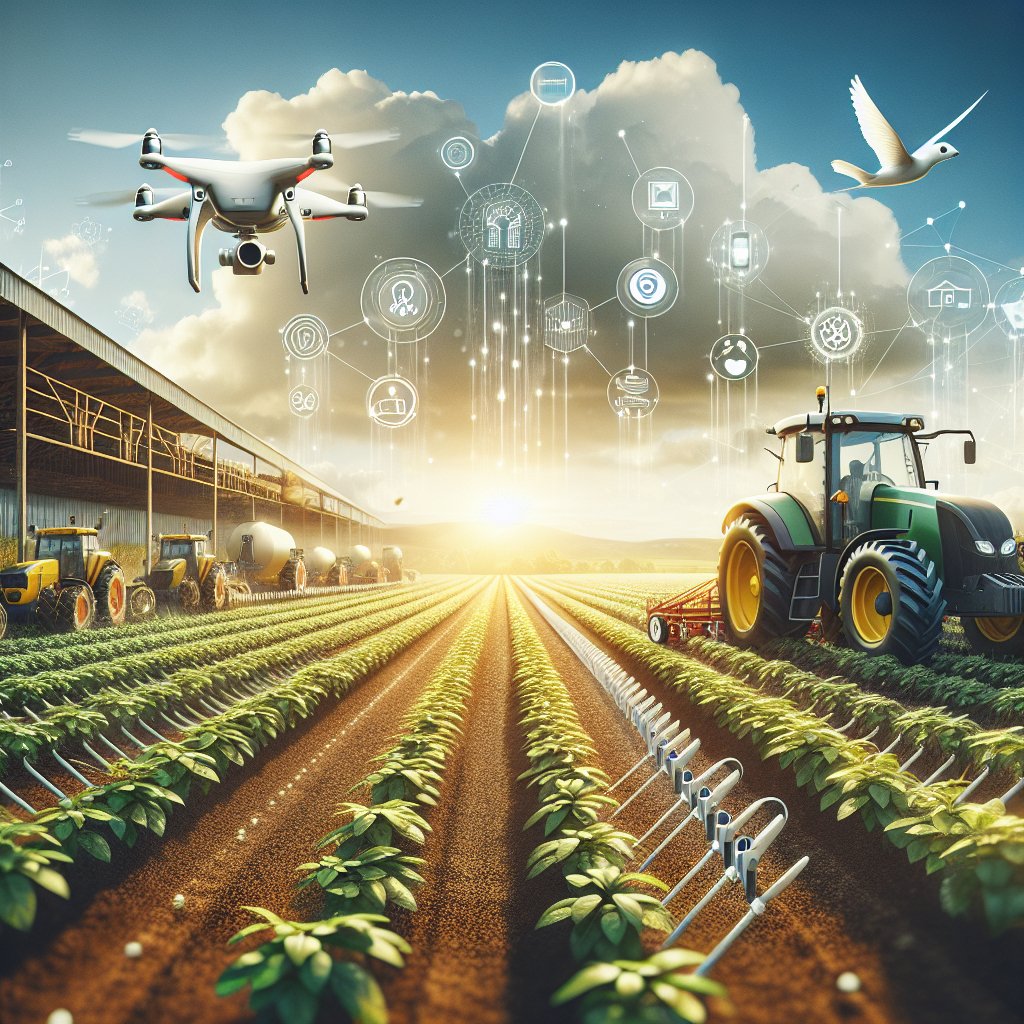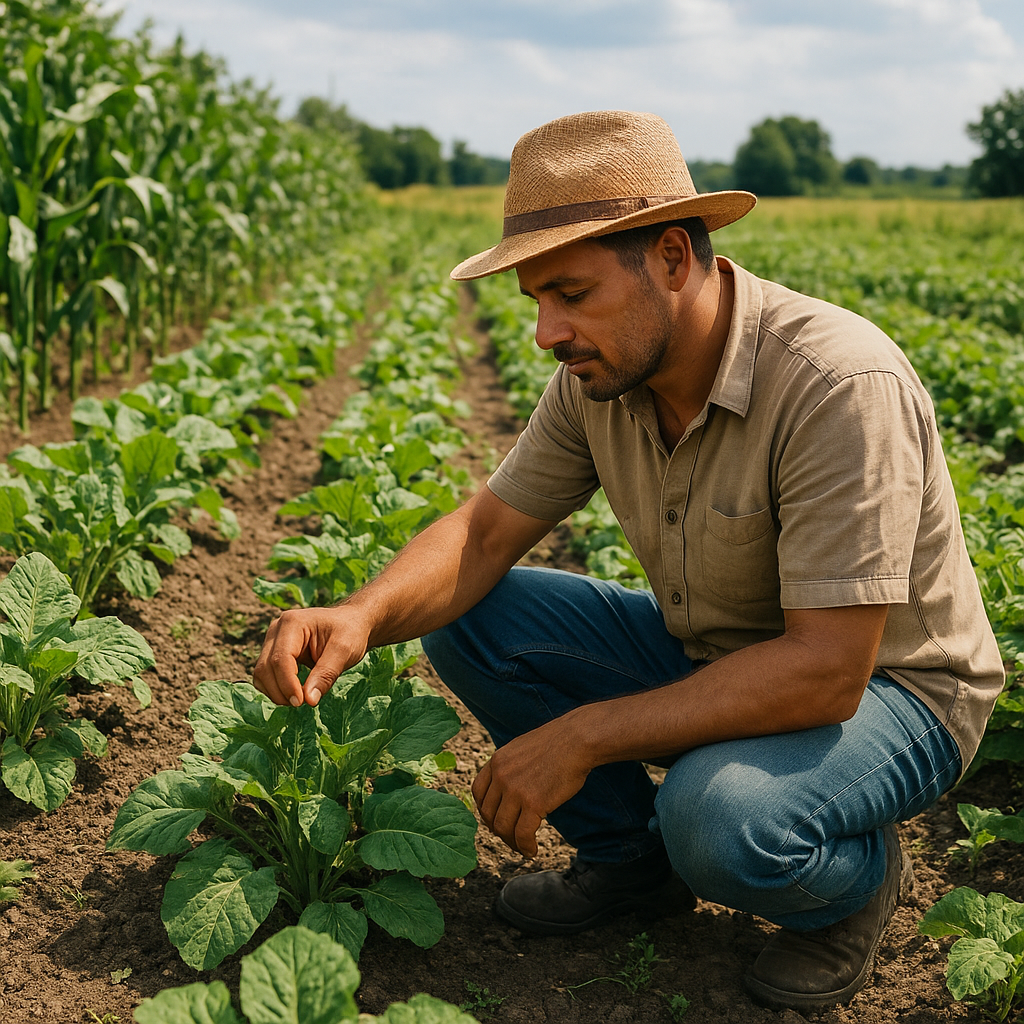
Improving farm productivity with smart technology is a transformative approach that is reshaping the agricultural landscape. As the global population continues to grow, the demand for food production increases, necessitating innovative solutions to enhance efficiency and sustainability in farming practices. Smart technology offers a range of tools and techniques that can significantly boost productivity while minimizing environmental impact. This article explores the various ways in which smart technology can be leveraged to improve farm productivity, focusing on precision agriculture, data analytics, and automation.
Precision Agriculture: Enhancing Efficiency and Yield
Precision agriculture is a farming management concept that uses technology to monitor and manage field variability in crops. By employing GPS, sensors, and drones, farmers can gather detailed information about their fields, allowing them to make informed decisions about planting, fertilizing, and harvesting. This section delves into the key components of precision agriculture and how they contribute to improved farm productivity.
GPS and Mapping Technologies
Global Positioning System (GPS) technology is a cornerstone of precision agriculture. It enables farmers to create detailed maps of their fields, identifying variations in soil type, moisture levels, and crop health. By understanding these variations, farmers can apply inputs such as water, fertilizers, and pesticides more precisely, reducing waste and optimizing crop yield. GPS-guided machinery ensures that these inputs are applied accurately, minimizing overlap and ensuring even distribution.
Sensors and IoT Devices
Sensors and Internet of Things (IoT) devices play a crucial role in precision agriculture by providing real-time data on various environmental factors. Soil sensors measure moisture levels, temperature, and nutrient content, allowing farmers to adjust irrigation and fertilization schedules accordingly. Weather stations equipped with IoT devices provide accurate forecasts and alerts, helping farmers plan their activities to avoid adverse weather conditions. This data-driven approach enables farmers to optimize resource use and improve crop health, ultimately enhancing productivity.
Drones and Aerial Imaging
Drones equipped with cameras and sensors offer a bird’s-eye view of fields, capturing high-resolution images that reveal crop health, pest infestations, and other issues. These images can be analyzed to identify areas that require attention, such as sections of a field that are underperforming or suffering from disease. By addressing these issues promptly, farmers can prevent yield loss and improve overall productivity. Drones also facilitate efficient crop monitoring, reducing the time and labor required for manual inspections.
Data Analytics: Turning Information into Actionable Insights
Data analytics is a powerful tool that enables farmers to make informed decisions based on the vast amounts of data collected from their fields. By analyzing this data, farmers can identify patterns, predict outcomes, and optimize their operations. This section explores how data analytics can be used to enhance farm productivity through predictive modeling, decision support systems, and machine learning.
Predictive Modeling
Predictive modeling involves using historical data to forecast future events and trends. In agriculture, predictive models can be used to anticipate crop yields, pest outbreaks, and weather patterns. By understanding these predictions, farmers can take proactive measures to mitigate risks and maximize productivity. For example, if a model predicts a high likelihood of pest infestation, farmers can implement preventive measures such as targeted pesticide application or introducing natural predators.
Decision Support Systems
Decision support systems (DSS) are software tools that help farmers make informed decisions by analyzing data and providing recommendations. These systems integrate data from various sources, such as weather forecasts, soil conditions, and market prices, to offer insights on the best course of action. For instance, a DSS might suggest the optimal planting date for a particular crop based on weather predictions and soil moisture levels. By following these recommendations, farmers can improve their chances of achieving high yields and profitability.
Machine Learning and Artificial Intelligence
Machine learning and artificial intelligence (AI) are revolutionizing agriculture by enabling more accurate predictions and automated decision-making. Machine learning algorithms can analyze large datasets to identify patterns and correlations that may not be apparent to humans. This capability allows for more precise predictions of crop performance, pest behavior, and market trends. AI-powered systems can also automate routine tasks, such as monitoring crop health and adjusting irrigation schedules, freeing up farmers to focus on more strategic activities.
Automation: Streamlining Farm Operations
Automation is a key component of smart technology that can significantly enhance farm productivity by reducing labor costs and increasing efficiency. From autonomous tractors to robotic harvesters, automation is transforming the way farms operate. This section examines the impact of automation on farm productivity and the various technologies driving this change.
Autonomous Machinery
Autonomous machinery, such as self-driving tractors and combine harvesters, is becoming increasingly common on modern farms. These machines use GPS and sensors to navigate fields with precision, performing tasks such as plowing, planting, and harvesting with minimal human intervention. By automating these labor-intensive processes, farmers can reduce labor costs and increase operational efficiency. Autonomous machinery also allows for extended working hours, as machines can operate continuously without fatigue.
Robotic Harvesting
Robotic harvesting technology is particularly beneficial for labor-intensive crops such as fruits and vegetables. Robots equipped with cameras and sensors can identify ripe produce and pick it with precision, reducing damage and waste. This technology not only increases the speed and efficiency of harvesting but also addresses labor shortages, a common challenge in the agricultural sector. By ensuring that crops are harvested at the optimal time, robotic harvesters contribute to improved yield and quality.
Automated Irrigation Systems
Automated irrigation systems use sensors and weather data to optimize water use, ensuring that crops receive the right amount of water at the right time. These systems can adjust irrigation schedules based on real-time soil moisture levels and weather forecasts, reducing water waste and improving crop health. By automating irrigation, farmers can save time and resources while enhancing productivity and sustainability.
Conclusion: Embracing Smart Technology for a Sustainable Future
Smart technology offers a wealth of opportunities for improving farm productivity, from precision agriculture and data analytics to automation. By embracing these technologies, farmers can enhance efficiency, reduce environmental impact, and meet the growing demand for food. As the agricultural sector continues to evolve, the integration of smart technology will be essential for ensuring a sustainable and productive future. By staying informed and adopting innovative solutions, farmers can position themselves at the forefront of this technological revolution, reaping the benefits of increased productivity and profitability.

